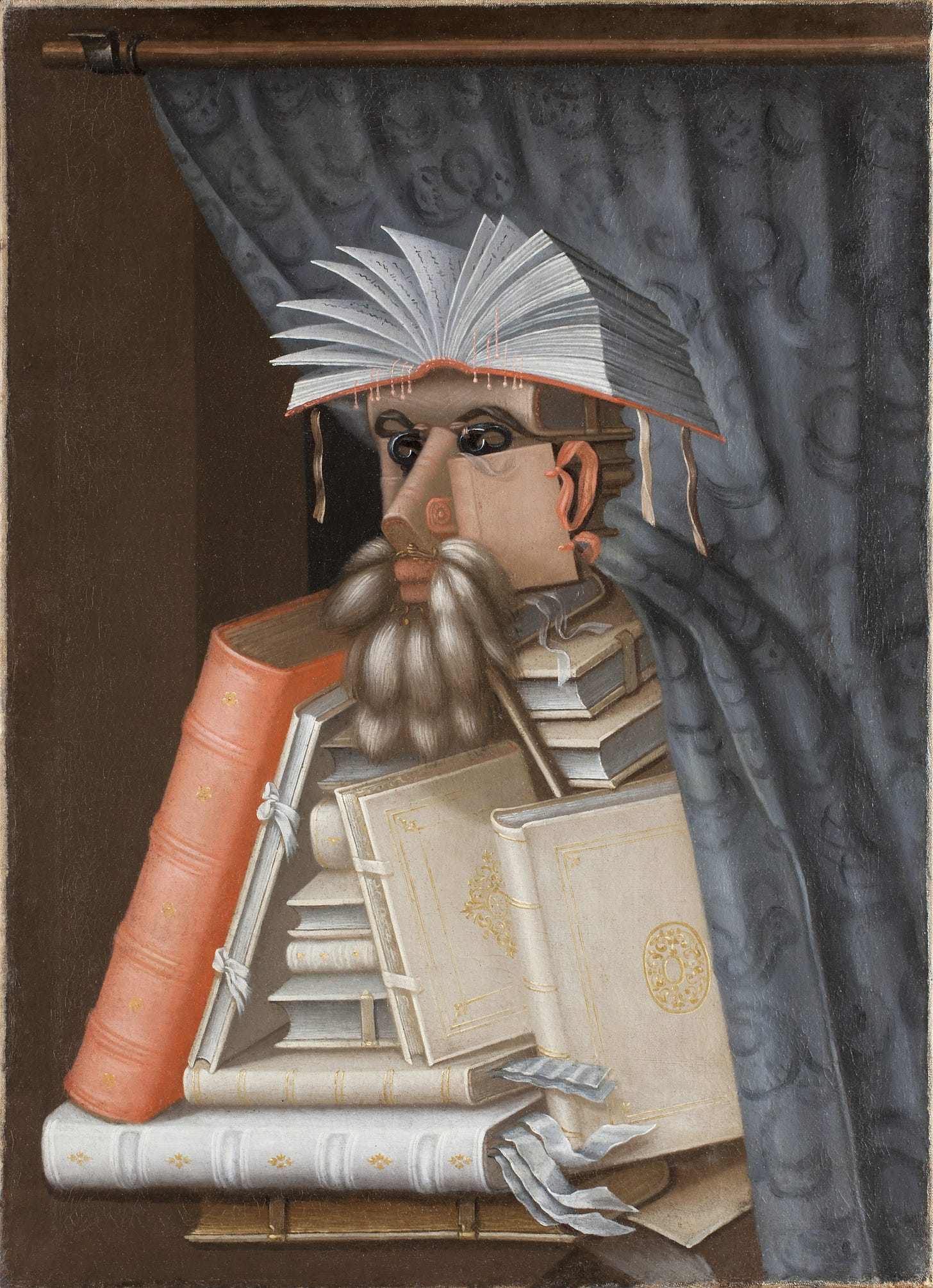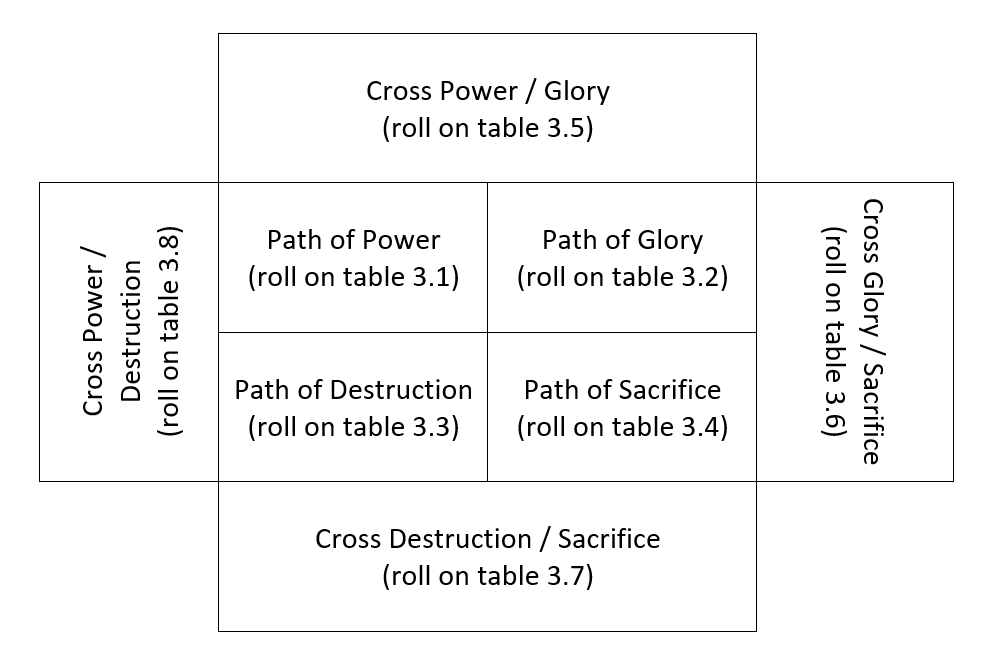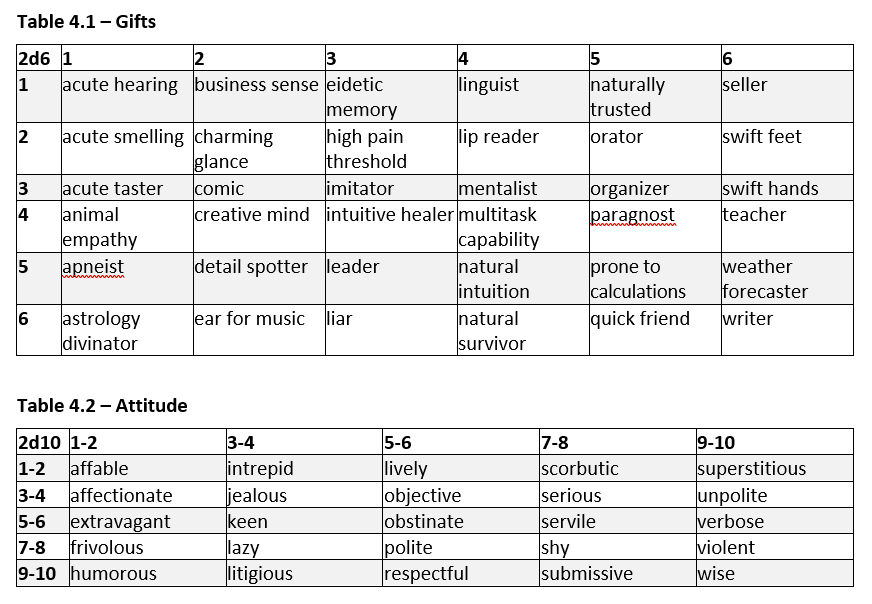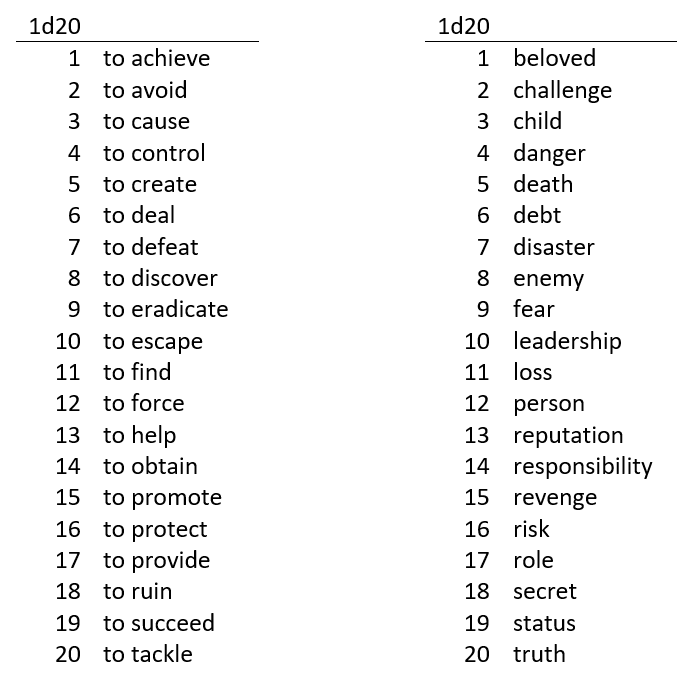Character profiling process in four steps (according to the KUP model)
While working on Death by Dungeon, the community project launched by Thog, I came to the conclusion to share a part of the supplement Personæ with all the fellows of this project. However, since the shared part is namely the core of that book, I thought it might be worth to share it also with all the readers of VI·VIII·X Substack!
So, here we go: assume you rolled an NPC and you have all the stats (i.e. quantitative details), you still miss a part of that character (and let me add: the most important one!): the character’s profile!
With the 4-step process described here below you can manage to complete you NPC with your preferred level of detail: the more insights you are looking for, the higher number of features you need to determine with the tables here below! Enjoy!
The 4-step process defines:
NPC occupation
NPC personality
NPC various traits
NPC purpose
NPC occupation: roll 6d6 to determine the occupation (and an extra die in case of subcategories). Otherwise assign a probability for every occupation and roll a d% (the table accepts two different sets of probabilities).
NPC personality: roll the dice as many times as the required features of the NPC in the proper table of Path. The GM is free to decide to use one or more descriptors, hence if he wants an NPC with 3 features, then it is necessary to roll three times, one per feature. There are some outcomes which require to look up in other personality tables (namely the tables ‘cross Paths’) or to assign other features (namely Traits) instead of a personality descriptor (detailed in the following step).
Roll 2d6 in the table corresponding to the NPC’s Path (from 3.1 to 3.4); some outcomes of the Path tables are referred to tables ‘cross Paths’ (from 3.5 to 3.8) as well as to tables of Traits (see next paragraph).
For the sake of completeness, a proxy conversion between Paths and D&D alignments is the following:
PATH -> ALIGNMENT
Glory -> Lawful Good
Power -> Lawful Evil
Sacrifice -> Chaotic Good
Destruction -> Chaotic Evil
(…and btw, no, there are not Neutral positions in VI·VIII·X KUP RPG as that it is not an alignment!)
NPC traits: like for personality; it is possible that some descriptors are already defined by references from the personality tables and in that case the feature should be considered as a trait and not as a personality feature. Traits can be freely defined by GM, be them part of any of the 5 tables here below. They can also be defined as outcomes from personality tables. For every table the dice to be rolled are reported on top of them.
NPC purpose: roll 2d20 and cross the outcomes from the two tables below. These words placed in the context of the game setting provide the GM with a purpose, otherwise (if the outcomes are not applicable), just reroll 2d20 again.
PS I leave here a small ad for the Death by Dungeon community project I mentioned at the beginning, I hope to meet you over there!












Thanks Troy! For more details on Paths (and Morality), pls have a glance at them in the online core rules! You will find them in the second chapter: II.6. Character’s Morality and faith. Hope it helps, ciaoo
Really interesting charts, I especially like the 2d20 purpose chart. I think this would work really well for random NPCs generated on the fly because the purposes are vague enough to be improvised from.
I’m actually working on another article on how I deploy random NPCs to improvise, i might include this as something new to try!